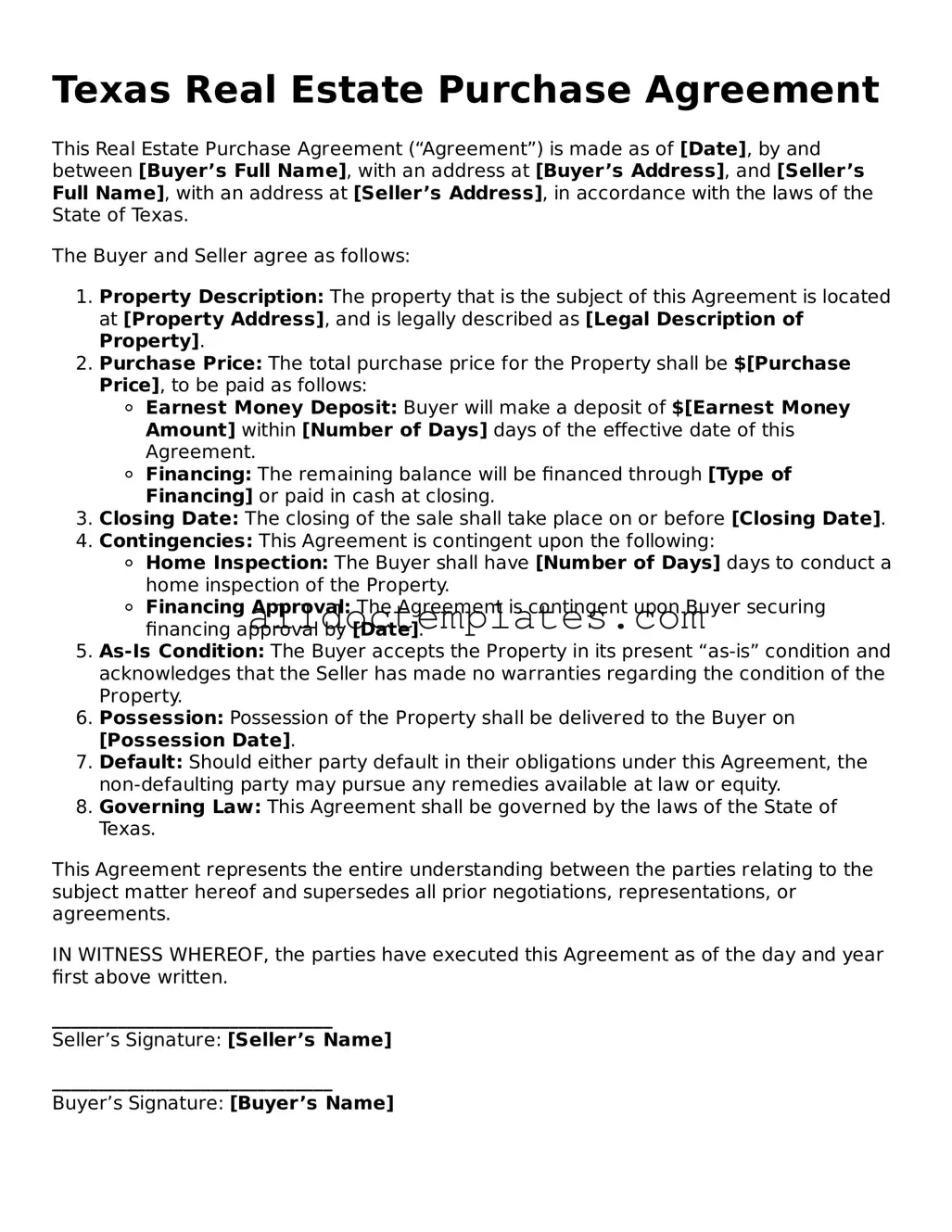Texas Real Estate Purchase Agreement
This Real Estate Purchase Agreement (“Agreement”) is made as of [Date], by and between [Buyer’s Full Name], with an address at [Buyer’s Address], and [Seller’s Full Name], with an address at [Seller’s Address], in accordance with the laws of the State of Texas.
The Buyer and Seller agree as follows:
- Property Description: The property that is the subject of this Agreement is located at [Property Address], and is legally described as [Legal Description of Property].
- Purchase Price: The total purchase price for the Property shall be $[Purchase Price], to be paid as follows:
- Earnest Money Deposit: Buyer will make a deposit of $[Earnest Money Amount] within [Number of Days] days of the effective date of this Agreement.
- Financing: The remaining balance will be financed through [Type of Financing] or paid in cash at closing.
- Closing Date: The closing of the sale shall take place on or before [Closing Date].
- Contingencies: This Agreement is contingent upon the following:
- Home Inspection: The Buyer shall have [Number of Days] days to conduct a home inspection of the Property.
- Financing Approval: The Agreement is contingent upon Buyer securing financing approval by [Date].
- As-Is Condition: The Buyer accepts the Property in its present “as-is” condition and acknowledges that the Seller has made no warranties regarding the condition of the Property.
- Possession: Possession of the Property shall be delivered to the Buyer on [Possession Date].
- Default: Should either party default in their obligations under this Agreement, the non-defaulting party may pursue any remedies available at law or equity.
- Governing Law: This Agreement shall be governed by the laws of the State of Texas.
This Agreement represents the entire understanding between the parties relating to the subject matter hereof and supersedes all prior negotiations, representations, or agreements.
IN WITNESS WHEREOF, the parties have executed this Agreement as of the day and year first above written.
______________________________
Seller’s Signature: [Seller’s Name]
______________________________
Buyer’s Signature: [Buyer’s Name]
